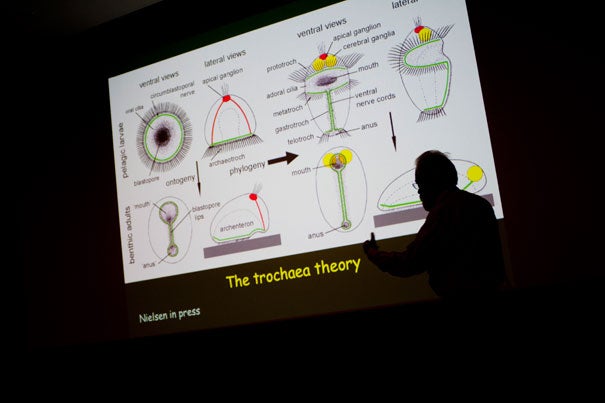
The 2nd International Congress on Invertebrate Morphology is packed with technical presentations and discussions on invertebrate form, function, and development.
Katherine C. Cohen/Harvard Staff Photographer
For love of the creepy, crawly
Invertebrate biologists converge for international conference
More than 200 biologists who study the creepy, crawly world of insects, clams, snails, and other invertebrates are at Harvard this week, exchanging ideas and getting to know each other in the 2nd International Congress on Invertebrate Morphology.
The biologists, who hail from about 20 countries, are participating in a four-day event ending Thursday (June 23) that is packed with technical presentations and discussions on invertebrate form, function, and development.
Professor of Organismic and Evolutionary Biology Gonzalo Giribet, the incoming president of the International Society of Invertebrate Morphology, organized the event, which is hosted by Harvard’s Museum of Comparative Zoology (MCZ), the Department of Organismic and Evolutionary Biology, and the Harvard Museum of Natural History (HMNH).
Attendees will hear discussions of neurophylogeny, or the study of the nervous system and its use to determine how creatures are related to each other, developmental biology, the morphological evolution of arthropods, and invertebrates as parasites, among other topics.
Giribet said attendees not only will share new findings and discuss scientific trends, but will also be able to examine special collections at the MCZ and at its Ernst Mayr Library. They’ll also examine the glass sea creatures, a lesser-known collection created in the 1800s by the artists who created the HMNH’s famed glass flowers, the Blaschkas.




